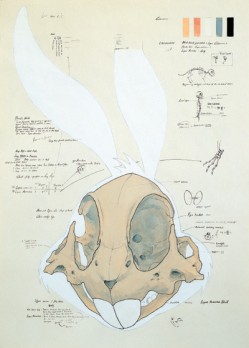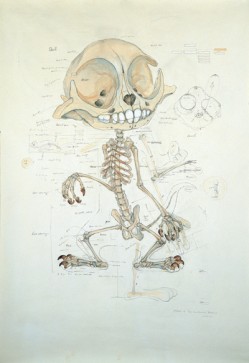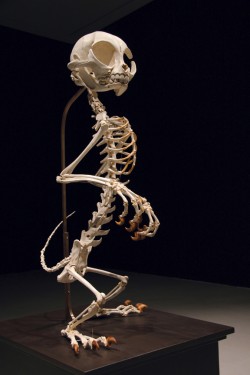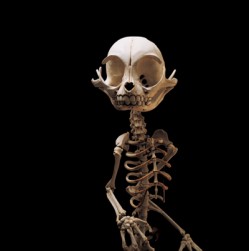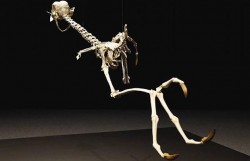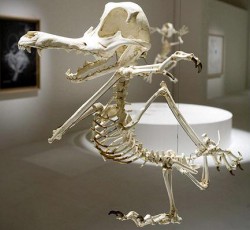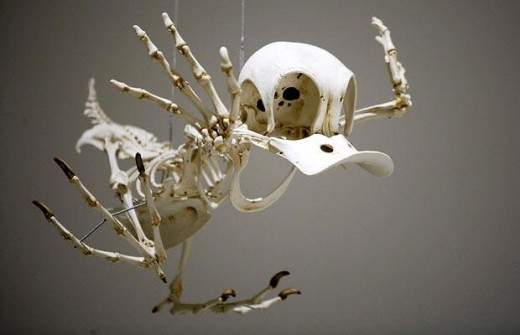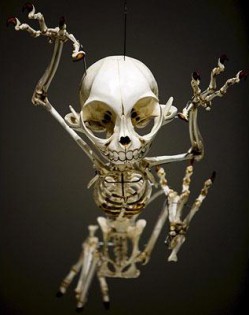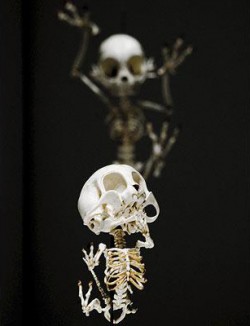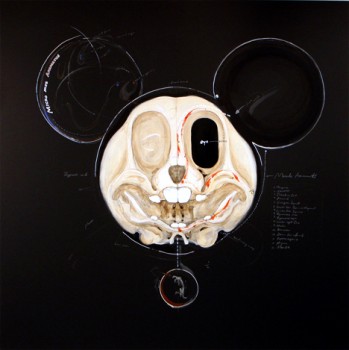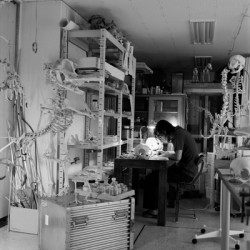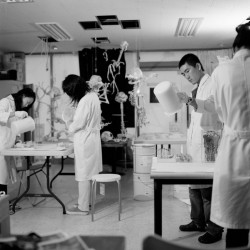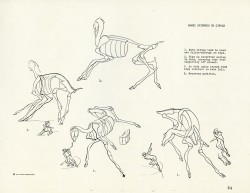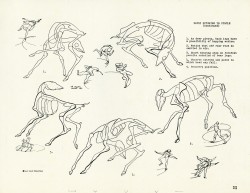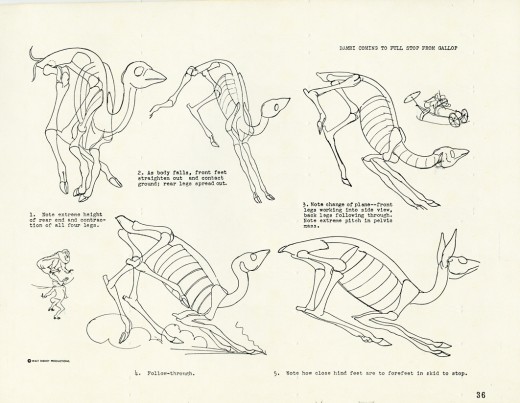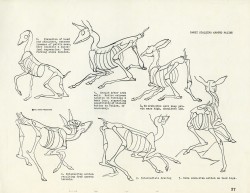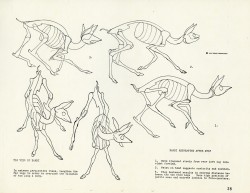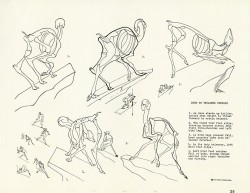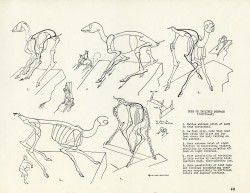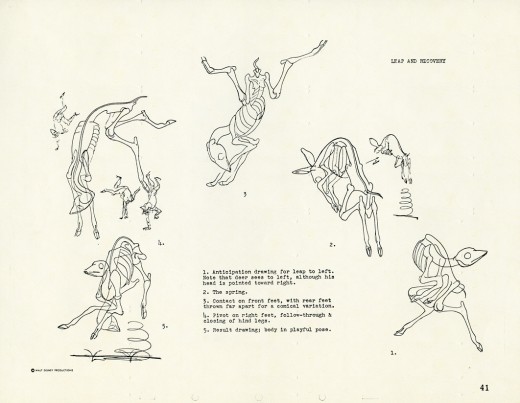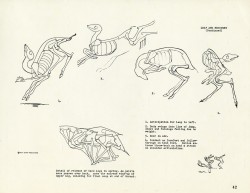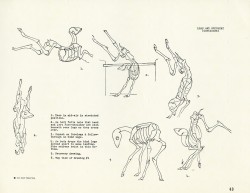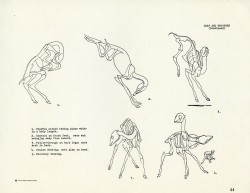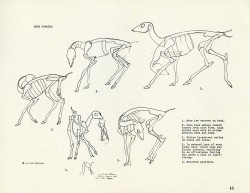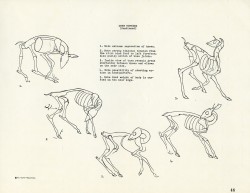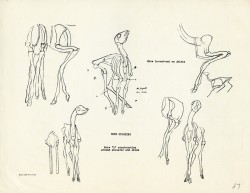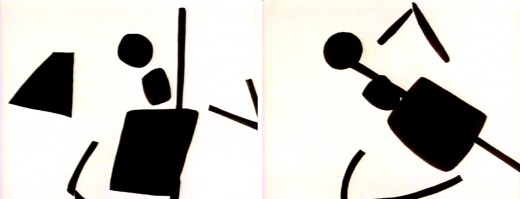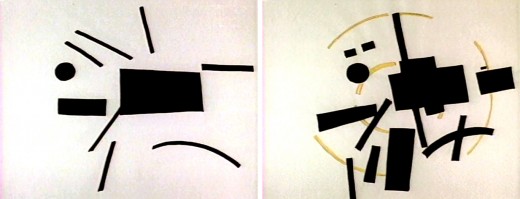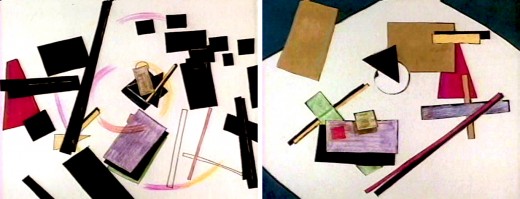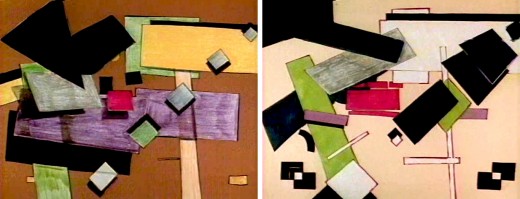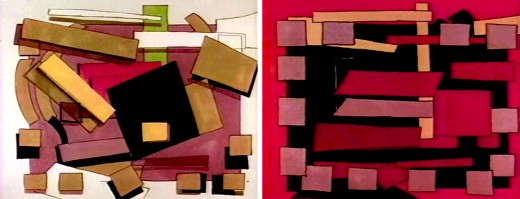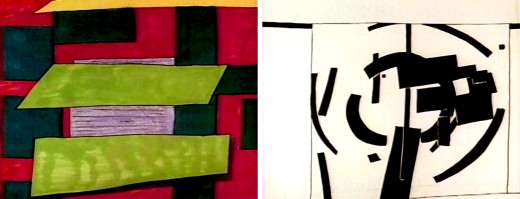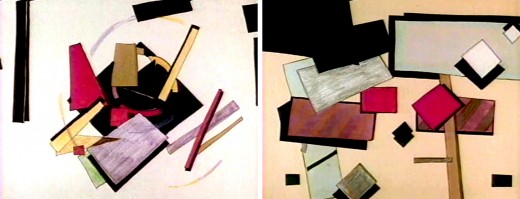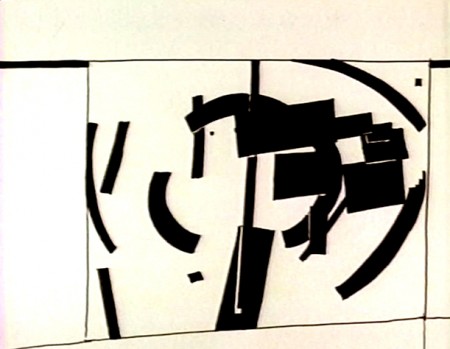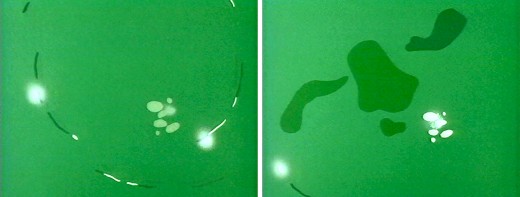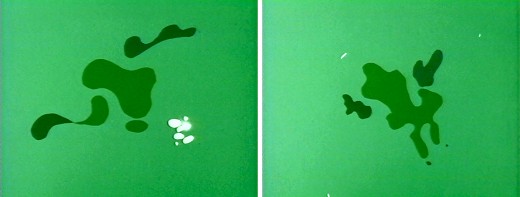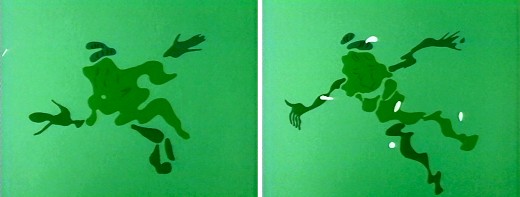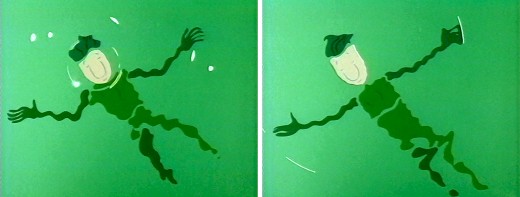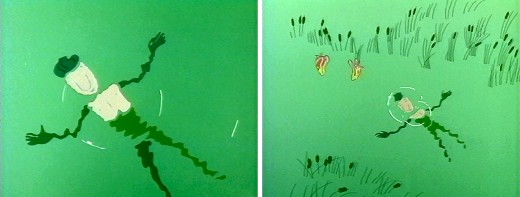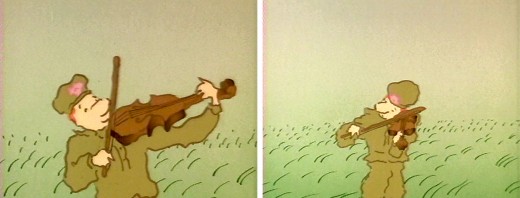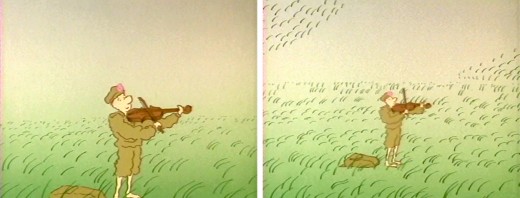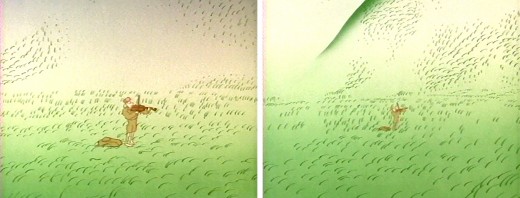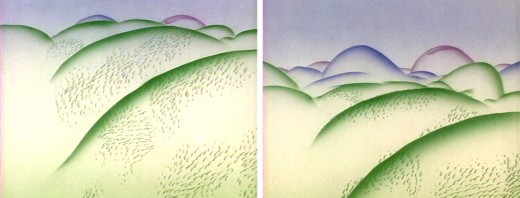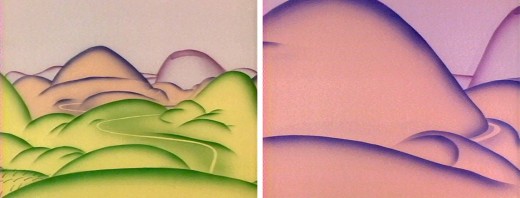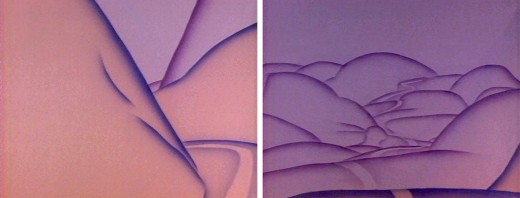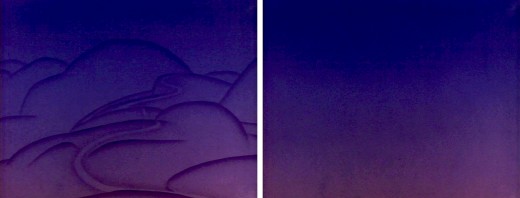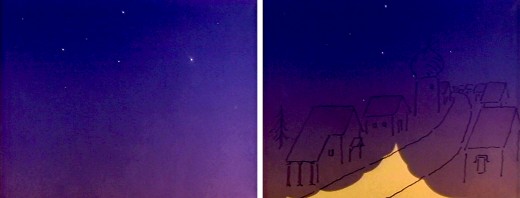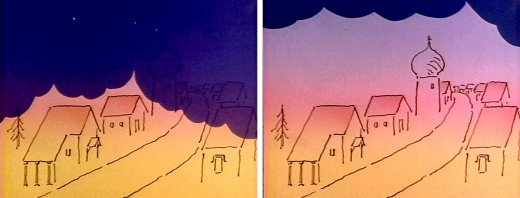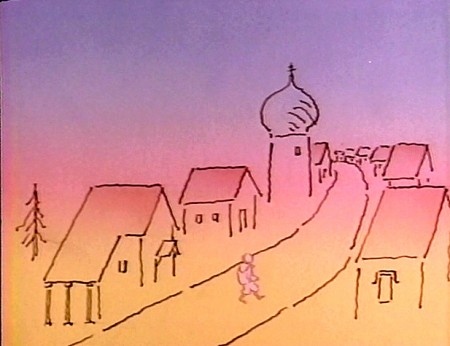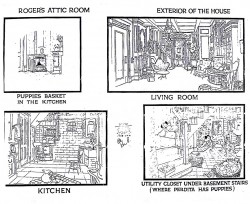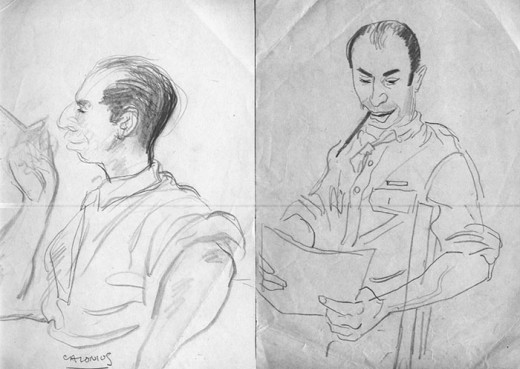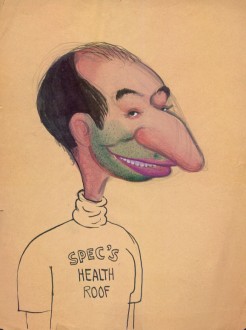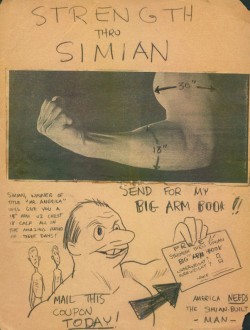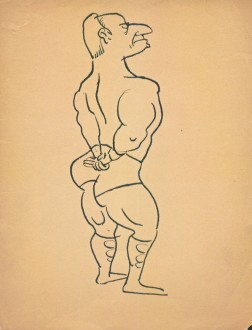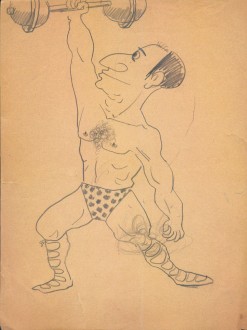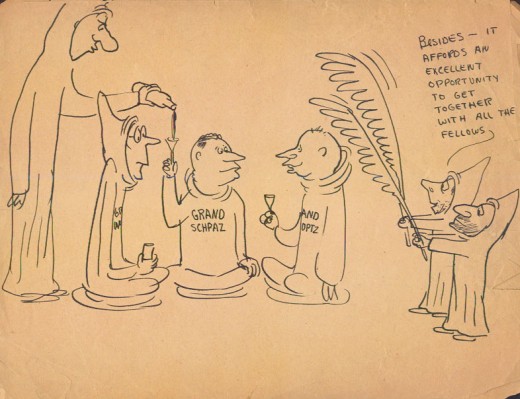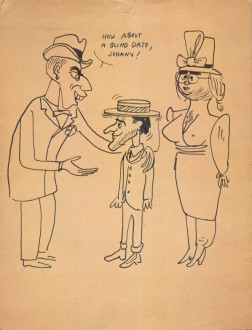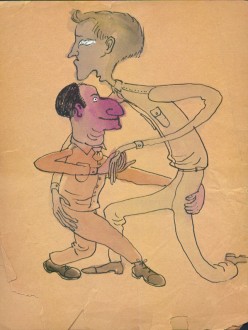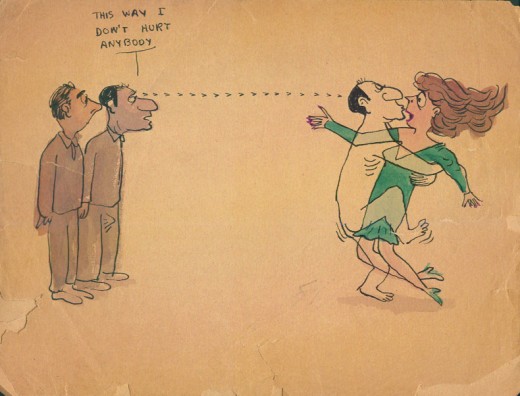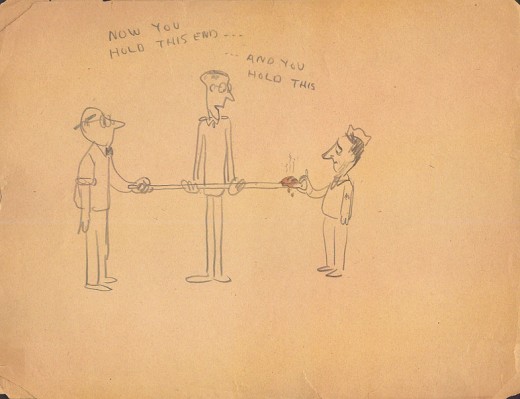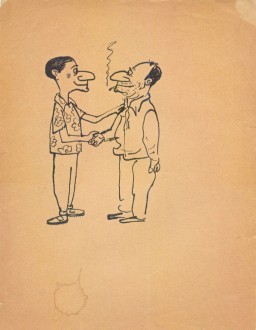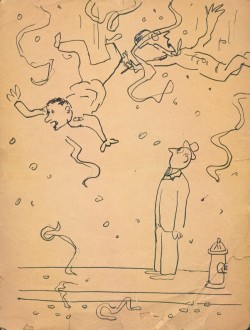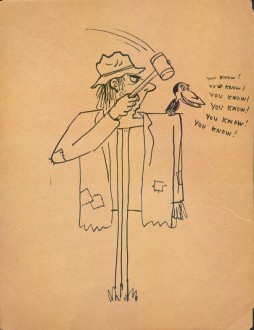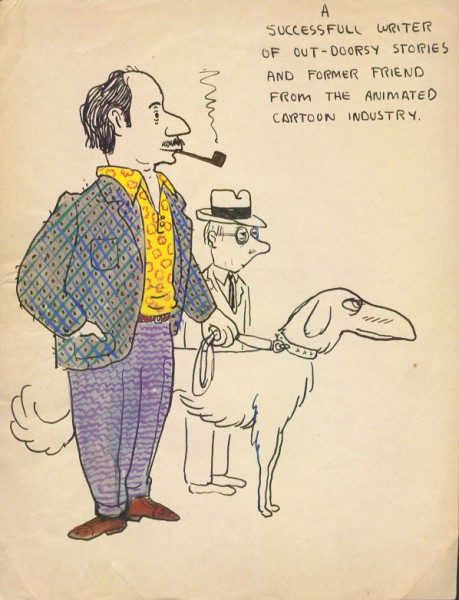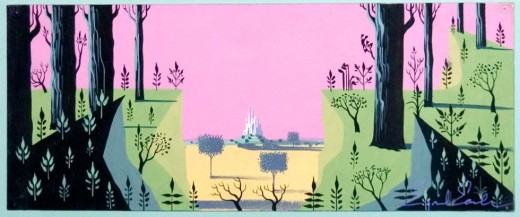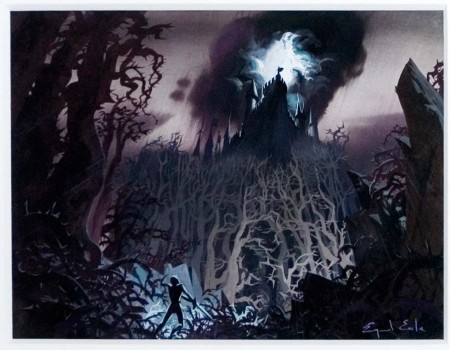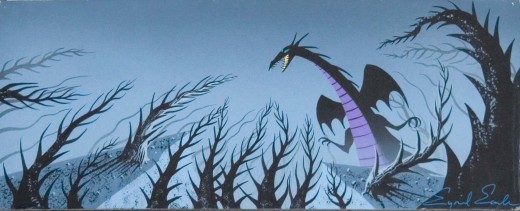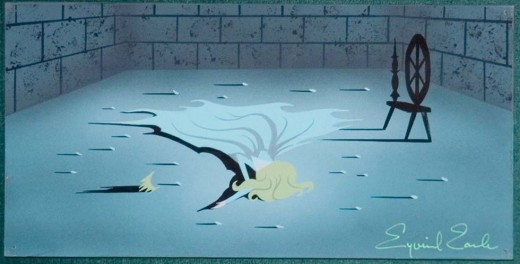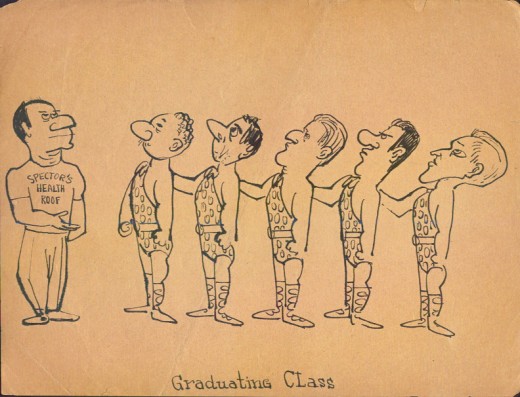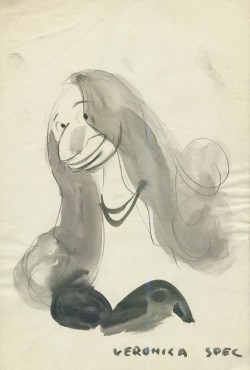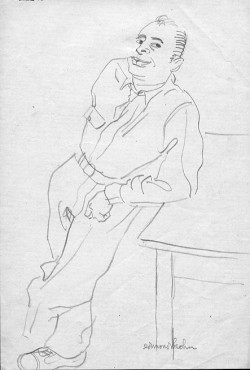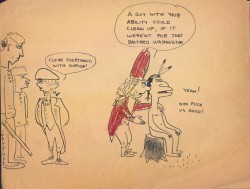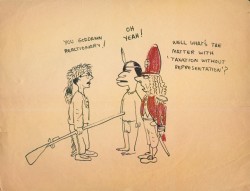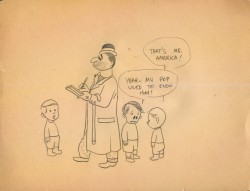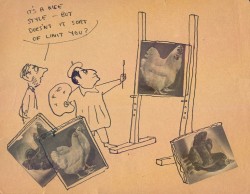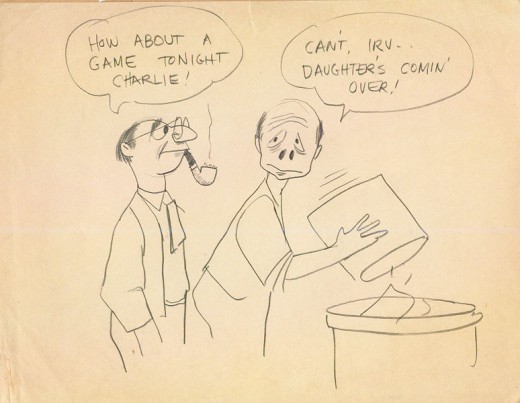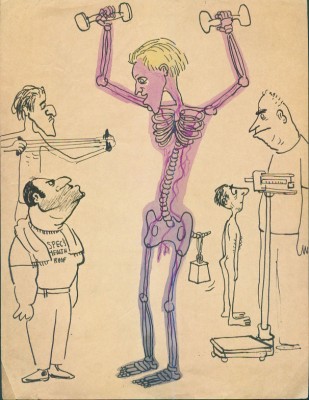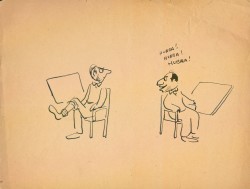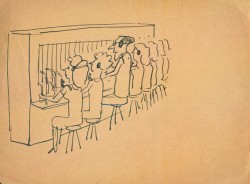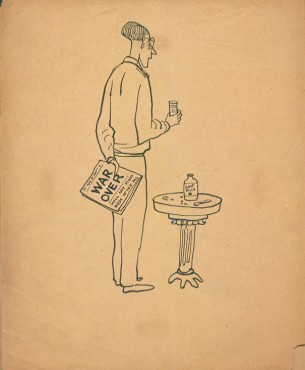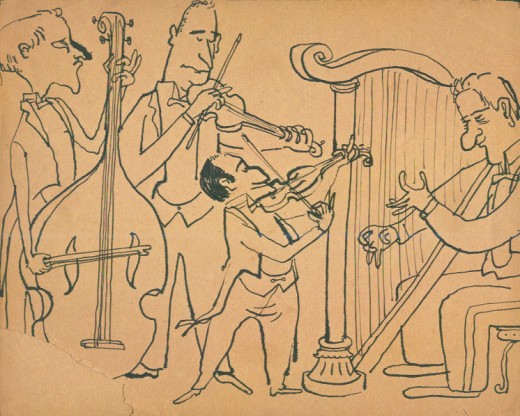Monthly ArchiveAugust 2008
Art Art &Daily post 21 Aug 2008 08:55 am
Skeleton show
- Following up the Rico LeBrun post from yesterday, here are some stills from an exhibition at the natural history museum in Basel, Switzerland. It imagines what the bone structure of some cartoon characters may look like.
The show is called Animatus. South Korean artist Hyungkoo Lee uses the techniques of paleontologists to create the skeletons of familiar comic figures such.
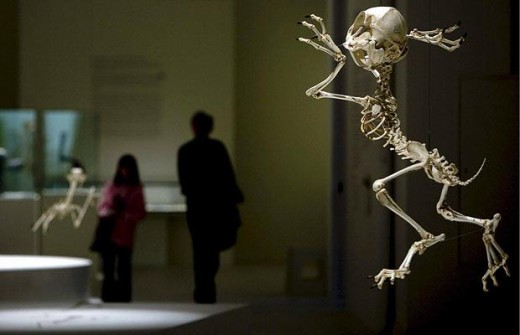
(Click any image to enlarge.)
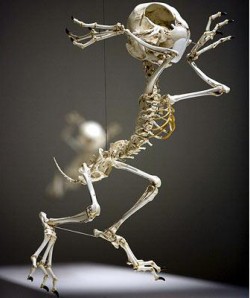
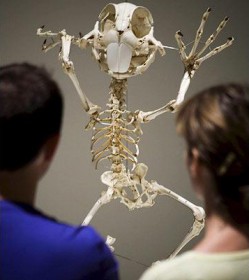
Bugs Bunny in all three above images.
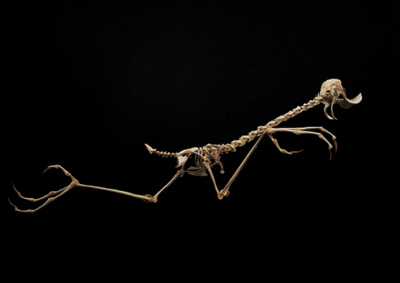
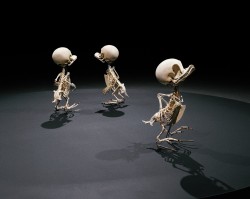
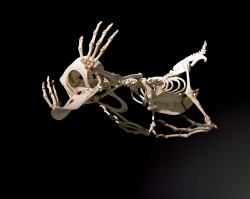
Huey, Dewey & Louie and Donald Duck
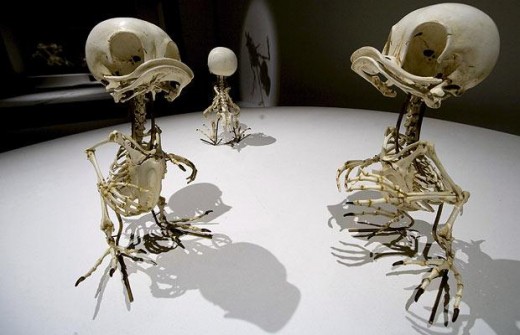
The sculptures are constructed of resin, aluminum sticks, stainless steel wires,
springs, brass bean and oil paint. They’re on wooden pedestals.
I’d formerly featured this sculptor’s work when the show opened in a Korean art gallery.
You should also take a look at Michael Paulus’ work, which I’ve featured several times. He has done this very thing years ago, and his work is quite humorous.
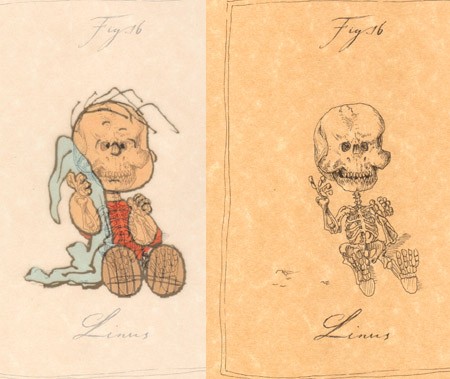
Paulus’ drawing of Linus.
Animation Artifacts &Books &Disney 20 Aug 2008 07:52 am
Part 3 -Rico LeBrun’s guides
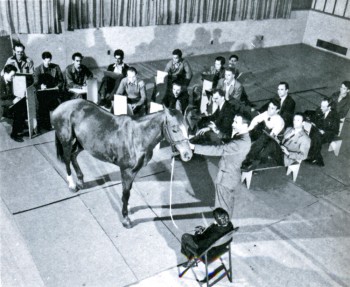 - I’ve posted the first two installments of Rico LeBrun’s guide to drawing the deer. This will complete the booklet that was prepared exclusively for the Disney artists working on Bambi where LeBrun taught classes in animal anatomy.
- I’ve posted the first two installments of Rico LeBrun’s guide to drawing the deer. This will complete the booklet that was prepared exclusively for the Disney artists working on Bambi where LeBrun taught classes in animal anatomy.
Sky David was kind enough to have copied these for me and I certainly couldn’t resist sharing this book with you.
Here’s part I.
Here’s part II.
Rico LeBrun in class teaching the anatomy of a horse.
_
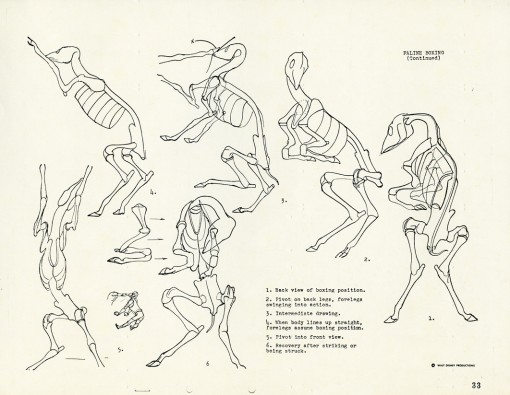 34
34(Click any image to enlarge.)
Thanks again to Sky David for the access to this great document.
Animation &Frame Grabs 19 Aug 2008 07:19 am
Fred Burns/Mogubgub’s Soldier
- A Soldier’s Tale was a film adaptation of Stravinsky’s ballet by R.O.Blechman. It was done in 1979, aired on PBS’ Great Performances and won the Emmy. Within the film were numerous sequences designed off of the constructivist Russian painters.
These sequences were quite daring. Fred Burns and Fred Mogubgub, both unusually strong animation filmmakers, were responsible for many of these. Last week I talked about Fred Burns’ work for Hubley with Everybody Rides the Carousel; here, I’d like to show off two of his opening segments of Blechman’s show.
In the show, a soldier is marching home from war. Fred Mogubgub takes him during this journey through the Urals and turns it into a constructivist head trip.
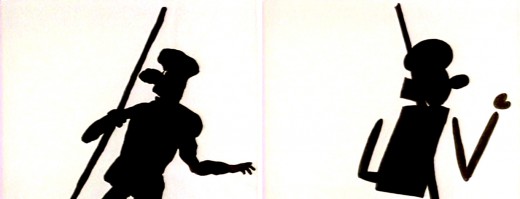
(Click any image to enlarge.)
It was at this point that Fred Burns picked up the sequence and brought things back to reality – sort of.
Here, Tissa David steps in to do some character animation wherein the soldier gets dressed, looks at pictures of his mother and his love. He then begins to play the violin in the field, and Fred Burns picks up the next sequence. It’s all animated by hand and painted on cel.
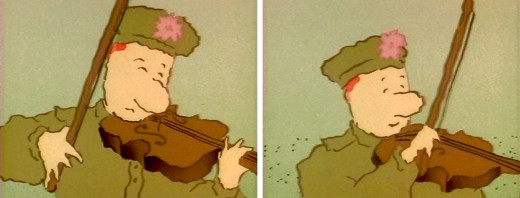
The film begins from here. A Faustian competition with the devil.
Commentary 18 Aug 2008 07:44 am
Burstin’ Out
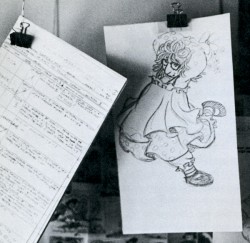 - This past week, Paul Spector offered some drawings of and by his father, Irv Spector, that were done while in the Signal Corps during WWII. The cartoons and caricatures were all drawn by artists from the varied studios working for the Army as cartoonists. Usually, these pictures don’t make a lot of sense to those outside of the studio and the immediate situations being caricatured. However, in posting this group of drawings en masse, I was taken by the high calibre of the art styling of the images.
- This past week, Paul Spector offered some drawings of and by his father, Irv Spector, that were done while in the Signal Corps during WWII. The cartoons and caricatures were all drawn by artists from the varied studios working for the Army as cartoonists. Usually, these pictures don’t make a lot of sense to those outside of the studio and the immediate situations being caricatured. However, in posting this group of drawings en masse, I was taken by the high calibre of the art styling of the images.
In the numerous studios I’ve worked cartoons were usually drawn. The larger the studio, the
____Tissa David’s self caricature in________greater the number of cartoons. I have at least
________the Canemaker book.___________100 of these cartoons saved from the Raggedy Ann experience where I became the lead character in an almost-daily strip drawn by assistant animator, Jim Logan. Lots of the other artists chimed in with many, many cartoons. (You can see a couple of these – certainly not the best which were very vicious – in John 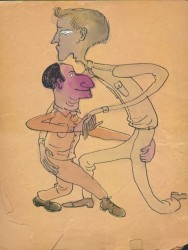 Canemaker‘s book, The Making of Raggedy Ann. Unfortunately, my folder of these cartoons is in storage or I’d post some of them.)
Canemaker‘s book, The Making of Raggedy Ann. Unfortunately, my folder of these cartoons is in storage or I’d post some of them.)
The thing about all these pictures is that they’re not, of course, art. They’re meant as quick funny gags trying to get a laugh. Some of those many Raggedy Ann drawings have style – Jim Logan’s quick sketches were the most vibrant and memorable – but most of them are just funny and without any visual gravity.
I think of this because I noted that in all of the cartoons I’ve seen from the Spector collection, there’s a real sense of art – modern art. These guys in the Signal Corps were obviously aware of Steinberg, Picasso, Matisse and the moderns.
This is a few years before UPA existed, although it’s likely that discussions of modern art moving into animation had been discussed by these guys. However, you can see in their cartoons that the 20th Century Art had become part of the fabric of 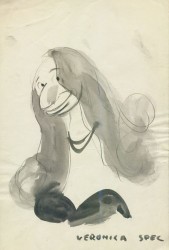 their very drawing styles. It was certainly bubbling to the top and waiting to burst out of them. UPA and the change was inevitable and couldn’t have been stopped, once someone would finance them.
their very drawing styles. It was certainly bubbling to the top and waiting to burst out of them. UPA and the change was inevitable and couldn’t have been stopped, once someone would finance them.
In discussing this with Paul Spector, he responded con-tinuing the subject. I thought this sentence of his particularly pertinent to the subject:
___I can only say that you could have found my dad at
___MOMA just as often as at the Met, and since he didn’t
___live in a vacuum no doubt he was not the only cartoonist
___doing this.
Thge point was that a large group of the cartoonists were keeping up with the arts. They were going to modern museums looking at 20th Century Art. Cartoonists such as Jack Kinney, Fred Moore and Norm Ferguson drew what came natureally. Others like VIP, John Hubley, and Sam Cobean studied new art and absorbed it into their system. This is what they drew naturally.
Of course, once UPA was successful others quickly jumped in and expressed themselves in an art style they truly appreciated. Tex Avery‘s style changed drastically from the cartoon naturalism to flat, angled art. He took the new style from MGM to Walter Lantz. Ward Kimball took the opportunity of a low profile music short to introduce his version of UPA with Toot Whistle Plunk & Boom and won the Oscar for it. Even Paramount tried their hand by thickening the outer linework and keeping a thinner inner line. They also flattened everything. It was art, but it was bold for them. Terrytoons, prior to the big change under Gene Deitch, had only the natural kraziness of Jim Tyer, who could only have existed as wildly as he became under a UPA era.
They were drawing this material in their cartoon sketches; it had to come out in their animation.
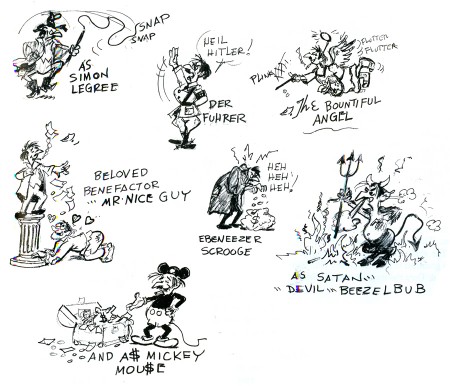
Jack Kinney’s caricature of the “7 faces” of Walt.
from Kinney’s Walt Disney and Assorted Other Characters.
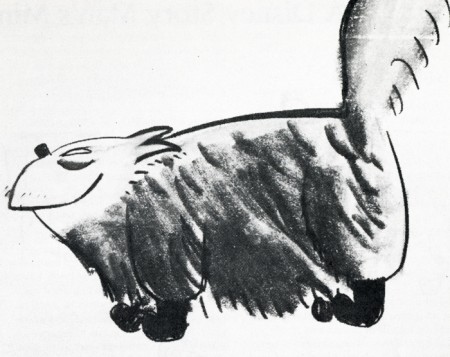
Dick Huemer as drawn by Joe Grant
from Mike Barrier’s Funnyworld #17
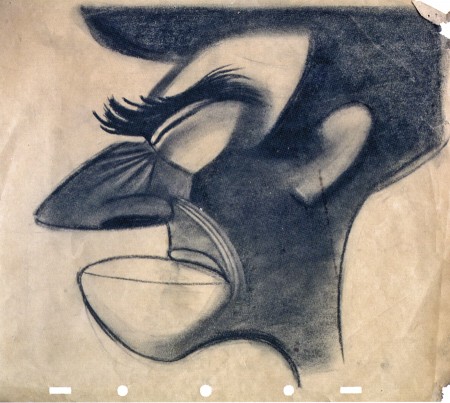
John Hubley’s caricature of Bob McIntosh
from Amid Amidi’s Cartoon Modern
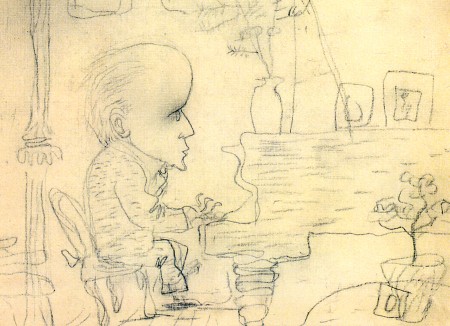
Fellini’s caricature of composer, Nino Rota.
Not all artists are animators.
Photos &repeated posts 17 Aug 2008 08:29 am
PhotoSunday – Rerun Raggedy Sunday
This is a recap of some photos that are worth viewing again. This was originally posted November 12, 2006.
- Having recently pored over some of the artwork from Raggedy Ann & Andy (the NY contingent of the 1977 feature film), I wondered if I had any photos that I could post. There weren’t many that I could find quickly, but the few I did find are here.
The first two stills were taken for the John Canemaker book, “The Animated Raggedy Ann & Andy.” I think only one of the two appears in the book.
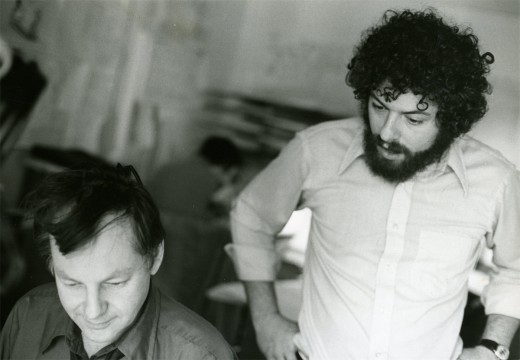
(Click any image to enlarge.)
Obviously, that’s Dick Williams with me looking over his shoulder. Oddly I remember being in this position often during the film. It’s probably the first image I have of the production when I look back on it. Dick and I had a lot of conversations (about the film) with him “going” and me listening.
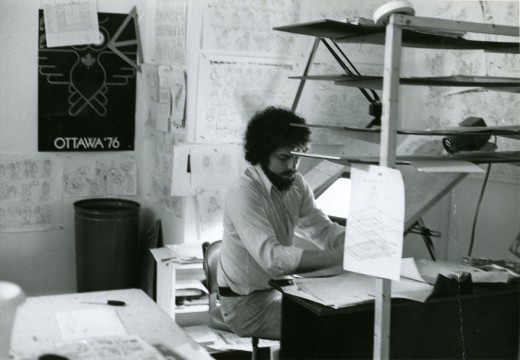
When I did actually grab time to do some drawing, this is my desk. It sat in a corner of a room – across from Jim Logan and Judy Levitow. There were about ten other assistants in my room, and there were about seven rooms filled with assistants on the floor. I had to spend time going through all of them making sure everybody was happy.
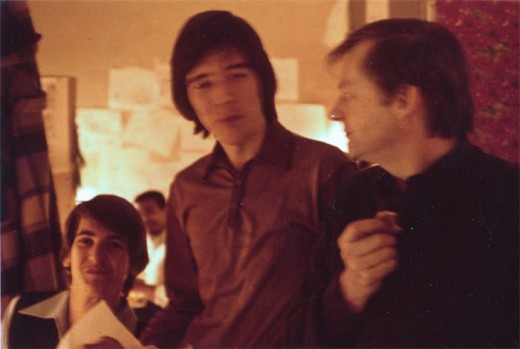
This slightly out of focus picture shows Dick Williams (R) talking with Kevin Petrilak (L) and Tom Sito. That’s Lester Pegues Jr. in the background. Boy were we young then!
These guys were in the “taffy pit,” meaning they spent most of their time assisting Emery Hawkins who animated the bulk of the sequence. Toward the end of the film, lots of other animators got thrown into the nightmarish sequence to try to help finish it. Once Emery’s art finished, I think the heart swoops out of that section of the film.
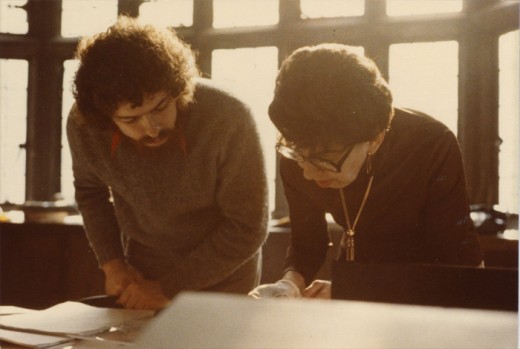
This photo isn’t from Raggedy Ann & Andy, but it just might have been. That’s the brilliant checker, Judy Price showing me the mechanics that don’t work on a scene on R.O.Blechman‘s Simple Gifts. This is the one-hour PBS special that I supervised after my Raggedy years. However, Judy was a principal on Raggedy Ann, and we spent a lot of time together.
Ida Greenberg was the Supervisor of all of Raggedy Ann’s Ink & Paint and Checking. She and I worked together on quite a few productions. I pulled her onto any films I worked on after Raggedy Ann. She was a dynamo and a good person to have backing you up.
I’m sorry I don’t have a photo of her from that period.
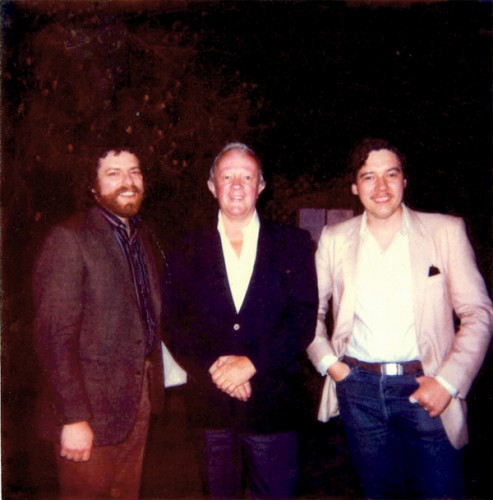
This is one of my favorite photos. Me (L), Jim Logan, Tom Sito (R). Jim was the first assistant hired after me – I’m not sure I was an assistant animator when they hired me, but I was being geared for something. The two of us built the studio up from scratch. We figured out how to get the desks, build the dividers, set up the rooms and order the equipment.
To top it all, Jim kept me laughing for the entire time I was there. I can’t think of too many others I clicked with on an animation production as I did with him. He made me look forward to going into work every day.
We frequently had lunch out, he and I, and I think this is at one of those lunches when Tom joined us. It looks to me like the chinese restaurant next door to the building on 45th Street. Often enough, Jim and I would just go there for a happy hour cocktail before leaving for the night.
I should have realized how important that period was for me and have taken more pictures. Oh well.
Animation Artifacts &Comic Art &Commentary 16 Aug 2008 07:58 am
Odds and More Ends
Today’s NY Times features a Blog/Article that analyzes all of the Star Wars movies. The author, Chris Suellentrop, says the new video game is “small consolation for the realization that the franchise that dominated their lives for 30 years has ceased to matter.”
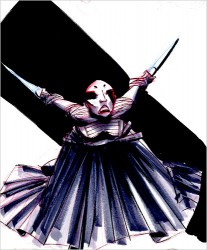 Lucas’ Cloned Wars received one star
Lucas’ Cloned Wars received one star ![]() from all of the NY papers, including the NY Daily News. JOE NEUMAIER says of the film, it’s “chock-full of video game-style action scenes and drawn to resemble the puppets in the 1960s British TV show “Thunderbirds,” is just as wooden as the last few live-action movies…”
from all of the NY papers, including the NY Daily News. JOE NEUMAIER says of the film, it’s “chock-full of video game-style action scenes and drawn to resemble the puppets in the 1960s British TV show “Thunderbirds,” is just as wooden as the last few live-action movies…”
NATHAN LEE in the NY Times says: “it isn’t the most painful movie of the year!”
The NY Times also has a slide show feature of “concept art” from the film (five images.) That’s where I pulled the image to the left.
Newsday‘s RAFER GUZMÃN (AP) says: “the film feels like an unauthorized knock-off, one of those “tribute” shorts that pop up on fan Web sites.”
Apparently this is the pilot for a new series coming to Cartoon Network. It’s obviously part of their push to get more 14 year old boys to watch. I guess it’s a positive that it’s not a live action series for CN. I wonder how long it will be before Lukas clones “Indiana Jones”?
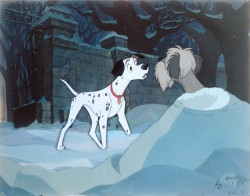 – Mark Mayerson, as you probably know, still continues to post his wonderful Mosaics on 101 Dalmatians and gives the excellent commentary with it. I write this only to remind you to keep up. Mark’s work is an enormous resource that can be too easily taken for granted. I wish he were able to print these up in book form. Perhaps, some day Disney books will realize there’s an excellent publication for grab here. “?
– Mark Mayerson, as you probably know, still continues to post his wonderful Mosaics on 101 Dalmatians and gives the excellent commentary with it. I write this only to remind you to keep up. Mark’s work is an enormous resource that can be too easily taken for granted. I wish he were able to print these up in book form. Perhaps, some day Disney books will realize there’s an excellent publication for grab here. “?
- Robert Cowan‘s art collection includes a cel set-up (above left) that seems to jump right off Mark’s mosaic. How interesting that Mark chose that particular set-up. How great the Cowan collection is; take a look at the site if you’re not familiar with it or if you haven’t been there in a while. You should also look at his Comic Art collection. There, you’ll find everything from Burne Hogarth to George MacManus to Winsor McCay.
- On the Animation Archive site, I found these Bg. plans for 101 Dalmatians. It really defines the layout of the house. In case you don’t know this site, they have dozens of model sheets for viewing. Some are brilliant, some are bad copies, all are worth checking out.
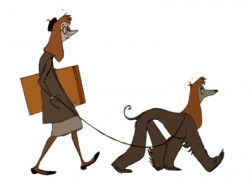
- I received an interesting art link yesterday which displays accredited art colleges to create a comprehensive directory for potential students to browse. Since I’m sure a lot of students check out this blog, I thought it might be a useful link for some readers out there. It’s called FindYourArtSchool.com.
For those considering an education in fields relevant to animation, this may be helpful.
.
Animation Artifacts &Guest writer 15 Aug 2008 07:59 am
Irv Spector – II
- On Wednesday, I’d posted some wonderful drawings and an excellent piece by Paul Spector about his father, Irv Spector, in the Signal Corps. There are many more cartoons and caricatures Paul has to share, so here’s a follow up to that post.
On Cartoon Brew, Amid Amidi had this response to one of those commenting regarding the cartoons, and I think it worth adding here:
Gag drawings done at animation studios are very ephemeral. It’s hard to know fifty years later what the situation was that prompted this drawing by Cobean. Then again, these drawings were never intended to be viewed decades later or seen by people outside of the studio.
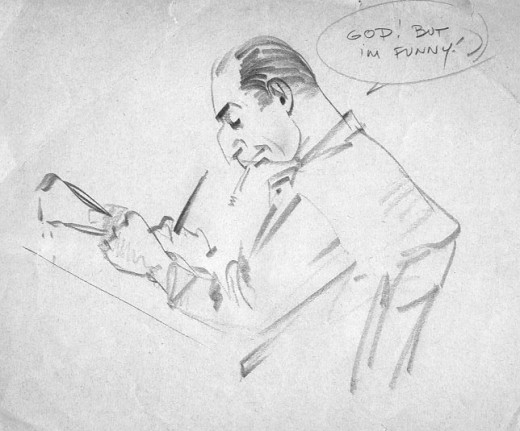
Irv Spector – “God – but”
Animation Artifacts &Daily post &Disney 14 Aug 2008 07:43 am
Blogged Me & Eyvind Earle
In the past two days I found myself the subject of a couple of animation sites. This is, no doubt, due to my two new dvd releases. Both have received a lot of attention on review sites and have been favorably reviewed, but these animation sites deserve to be mentioned.
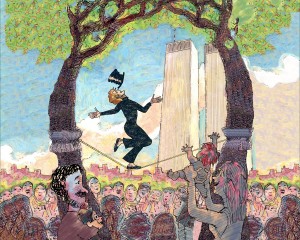 - Last week, I’d received an email from Mike Barrier with a letter he’d received from “anonymous.” The letter was a not-very-positive comment about Mike’s positive reviews of my film, The Man Who Walked Between the Towers. So I wrote a slightly annoyed response which Mike posted. I think if “anonymous” had had the courage to stand behind the letter by using his(her) name, I would have been more patient with it. Just the same, it all makes for a peculiar read. I can’t say I mind it, in the end. Take a look, here. ____________________ An image drawn by me that duplicates one in the book.
- Last week, I’d received an email from Mike Barrier with a letter he’d received from “anonymous.” The letter was a not-very-positive comment about Mike’s positive reviews of my film, The Man Who Walked Between the Towers. So I wrote a slightly annoyed response which Mike posted. I think if “anonymous” had had the courage to stand behind the letter by using his(her) name, I would have been more patient with it. Just the same, it all makes for a peculiar read. I can’t say I mind it, in the end. Take a look, here. ____________________ An image drawn by me that duplicates one in the book.

– Mike Dobbs, the estimable animation historian and former editor of Animato and Animation Planet, has posted an interview with me on his site, Animation Review.
By the way, Mike Dobbs has two other sites:
_____ Made of Pen & Ink is his book on the Fleischer
_______studios which is posted on line as he writes it.
_____ Out of the Inkwell is Mike’s general blog.
- Finally, David Nethery has posted a recommendation for my two new dvd’s on his site, Academy of Art Animation. Thank you, David. It’s much appreciated.
- And now for something completely different – let’s go back to Sleeping Beauty and Eyvind Earle. Bob Cowan responded to my posts of the art direction for that film by sending me some beautiful color pieces Earle did for the film. He’s given me permission to post them here. They’ve all been posted on Mr. Cowan’s site. There’s a lot of amazing artwork there – if you haven’t been following it, go. These five paintings are beauties.
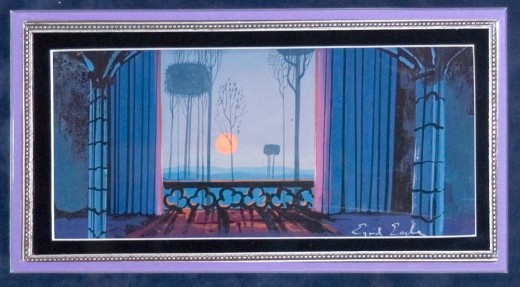
(Click any image to enlarge.)
Animation Artifacts &Articles on Animation &Guest writer &Photos 13 Aug 2008 07:51 am
Irv Spector – I
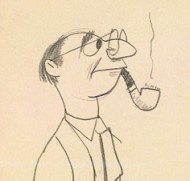 – Not too long ago, Paul Spector and I had an email conversation about his father, Irv Spector.
– Not too long ago, Paul Spector and I had an email conversation about his father, Irv Spector.
Irv was an animator that I knew periferally in New York during my first days in animation. We saw each otherat Union Meetings and some animation events in New York, but I didn’t really know about his start and key days in the business.
I jumped at the chance to ask Paul to share anything, anytime with this blog, and I’m pleased and excited to post this first entry from him.
__(Click any image to enlarge it.)
In 1941, during WWII, my father was an animator at Flesicher Studios in Miami, FL. At the the time, many cartoonists were being drafted into, or enlisting in, the miltary. Knowing he would soon be one of them he left Florida and drove across the country back to Los Angeles — where he was already registered for the draft — to push up his induction. (He began his career in LA at Mintz and Schlesinger, before taking a job with Fleischer when they were still located in New York).
Like a lot of other cartoonists my dad was assigned to the animation unit of the Signal Corp, making training films and other industrials; in his case back at the east coast unit.
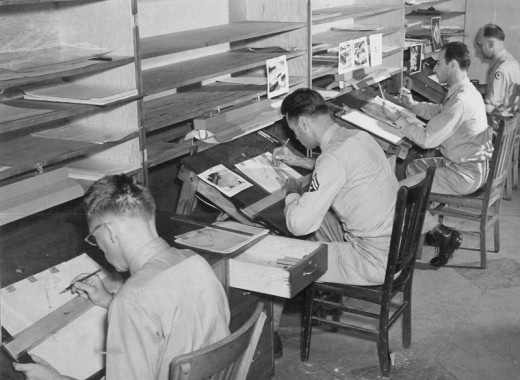
In this photograph, my father is second from the right.
While many of these films incorporated animation as well as live action and photography it was not just those in the animation field who worked in the Corp. Although those of us with an interest in the animation field tend to focus in on that aspect, the Corp also produced pamphlets and manuals, etc. One of these non-animation inductees was Sam Cobean whose illustrations appear in many of the images below. Some of the most striking are done by him. A quick note about Cobean: during the war he was taken under the wing of The New Yorker magazine cartoonist-extradinaire Charles Addams, who introduced him to the editors at the magazine. Cobean soon began publishing there, and his star rose quickly through the post-war years until he was tragically killed in an automobile accident in 1951. The majority of those below came out of a manila envelope with “Sam Cobean, Bob Perry, Others” written on it. Several others were from untitled envelopes. Very few are signed by the artists, although you’ll notice several that are, especially two straighter drawings by the magnificient Lars Colonius. However, the vast remainder are pretty much gags and caricatures. Mostly funny, ludicrous, or just really nice to look at.
Some poke fun at army life, but most of all they lampoon my dad, who appears in almost all of them along with a cast of other cartoonists in the unit. (But whose else would I have? Naturally, about 98% of what I have is his work. This is the other 2%). The joke in some of these is that my father began to lift weights in the army, hence the drawings where he is muscled, or the mention of “Spector’s Health Roof”, or referred to as Simian(!) Here is are some real photographs of my dad in those years, so you can get a fix of what he really looked like then. Make sure you scroll down, and maybe someone out there can identify the three other gents in the image of them sitting along a wall (my father is second from right, with his eyes closed.)
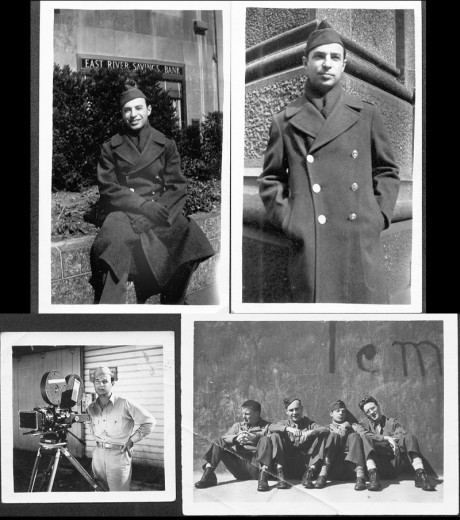
Irv Spector
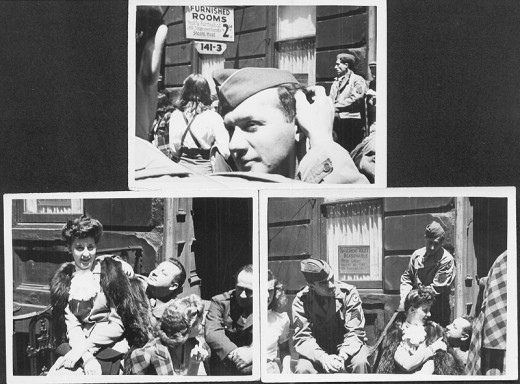
I’ll leave it up to all of you to try and identify anyone depicted throughout. One who is obvious to me is animator Herman Cohen, a longtime friend of my dad’s and our family in general. Here are some photographs on him — that’s his wife Juliet sitting on his lap.
An anecdote about Herm: In the mid-late 1960s, Herm and one of his sons, and my dad and myself, were shooting pool at our house. On one of Herm’s turns, we watched him take his cue stick and line it up by the 1-ball, sizing up angles. However, when it was time to take the shot, he actually hit the 1-ball with his cue — as if it were the cueball — to sink another ball. A moment later my dad says, “Hey, I forgot all about it. Herman is color blind!” Yep, Herm mistook the solid yellow 1-ball as the cueball. Just goes to show there’s hope that you too can have a lifetime career as a respected animator without being able to identify colors.
(Here are a few more of Irv’s caricatures of the period.
None of them have any background info on them.
If you can ID any of the people, please feel free to comment. MS)
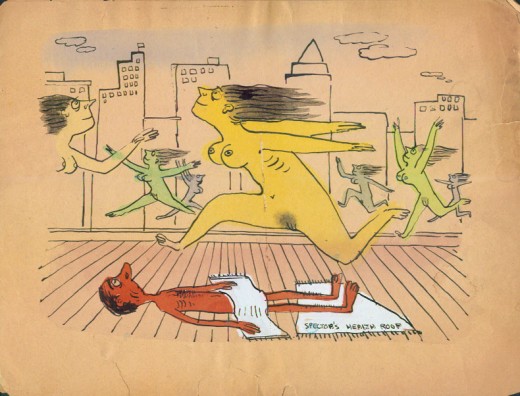
Health Roof
For the historians out there: There seems to be a dearth of information on the internet regarding the Signal Corp Animation Unit, east coast and west. If it helps, I’ve pieced together some of my father’s own moving around — date-wise, using some of the mail he received during this time. Maybe this info can be extrapolated…I dunno, but perhaps it can help.
- April 1942: Bob Givens (also in the service) writes him at Ft. Monmouth, NY (from Ohio).
August 1942: Givens writes him c/o of the Signal Corp Animation Unit at Long Island City, NY (no return address).
September 1942: Jack Rabin (just about to be inducted) writes to him at the Training Publications Dept. of the Anti Aircraft School, Camera Crew Unit #1, at Camp Davis, NC.
July 1943: Written to at the Signal Corp Photographic Center on E.32nd St., NYC, NY.
Jan/Feb, 1944: Carmen Eletto writes to him, again at the Signal Corp Photographic Center on E.32nd St., NYC, NY.
Here’s an undated item from the TAG blog. Givens is in it, at Ft. Monmouth. So, pre-April ’42 maybe? Before he was shipped out to Ohio, of all places.
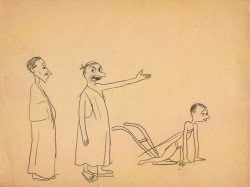
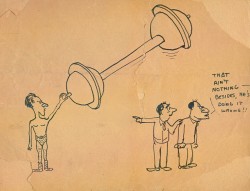
More images will follow on Friday.
Commentary 11 Aug 2008 08:27 am
From soup to nuts
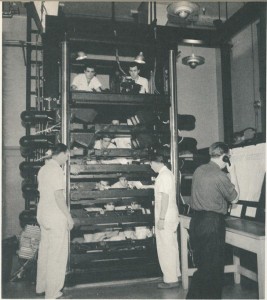 - To me, the most valuable posts of the last week or so came from Hans Perk on his blog, A Film LA. There he displayed some amazing artifacts showing patent papers and many photographs of Disney’s Vertical Multiplane Camera stand.
- To me, the most valuable posts of the last week or so came from Hans Perk on his blog, A Film LA. There he displayed some amazing artifacts showing patent papers and many photographs of Disney’s Vertical Multiplane Camera stand.
Ever since first seeing the drawings and photographs of the multiplane camera in Bob Thomas’ 1958 edition of The Art of Animation. I searched all the Disney films after that looking for where the camera was used. I scouted for information about the camera. Once I started filming my artwork (in 8mm) my brother-in-law and father teamed to construct one for me. It employed 12 levels of glass and about 6000 watts of light. Each level was about 24″ x 36″. I used this for many many film bits done between ages 14 and 17. (I still have it in storage, though I assume all the glass is broken and the lights are gone.)
In the last week, there has been more hard information here on the subject than I think I’ve seen in my lifetime, and believe me I’ve looked. I can only thank Hans for taking the time to offer this selection of material. If you haven’t seen the seven part series, go.
- Taking a 180° turn, I found this article in the Hollywood Reporter over the weekend. It is about new developments in Performance Capture. You can’t access the article without a subscription to the magazine, so I’ve reprinted the first few paragraphs.
- Man-to-man discussion
Creating CG actors on agenda at Siggraph
By Carolyn Giardina
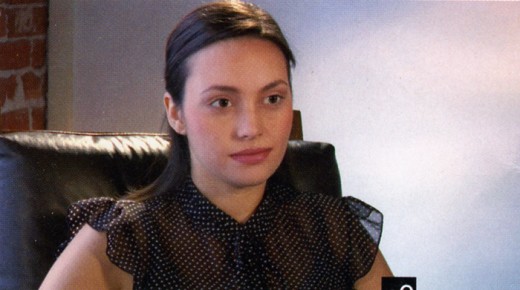
A computer-generated face has replaced the real face on this live-action body.
LOS ANGELES – Advancements in creating photoreal CG “human” characters and the related subject of motion capture will be key topics at Siggraph 2008, the international conference and exhibition on computer graphics and interactive techniques that opens Monday at the Los Angeles Convention Center.
“We are now at a point where we can create photoreal characters, but it is hugely labor-intensive and it is really expensive ” said Oscar-winning VFX supervisor Michael Fink (“The Golden Compass”), who recently was named president of VFX worldwide at Frantic Films VFX and Prime Focus Group.
“Can we do an absolutely, totally realistic Elvis Presley? Probably not. But that is because he is so well known,” he said. “But if we had to create a character that nobody had ever seen before ? That might be possible at this point. And in a few years it will be possible to do EMs. Alot of people think it is possible now. I don’t.”
Motion capture, also called performance capture, is the process of digitally recording an actor’s movement. It is not new, but the technology involved is advancing, making the process faster, more accurate and more flexible for VFX/animation houses to incorporate into their CG character creation.
This summer, Industrial Light + Magic used the technique to capture Robert Downey Jr.’s performance for their CG Iron Man. And Digital Domain similarly captured performances for its CG terra cotta army and foundation army in “The Mummy: Tomb of the Dragon Emperor.”
“It went from a reference tool to a body-animation tool. Now we are getting to facial motion capture — and all with less and less constricting systems,” Digital Domain CEO Mark Miller said.
As I’ve stated in the past, I’m not sure how long 2D animation will exist, but things are certainly changing quickly. Pixar keeps getting more and more realistic in their approach; obviously they know something.
And yes I am being provocative – for a reason.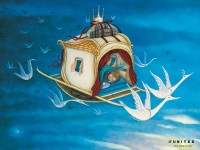
– The beautiful new ads for United Airlines are worth viewing. They’re quite stunning. Thanks to Amid on Cartoon Brew for directing me there. It’s a strong collection of mixed media pieces – from cgi to 2D to 3D/puppet. They’re quite the finest work in animated commercials.
